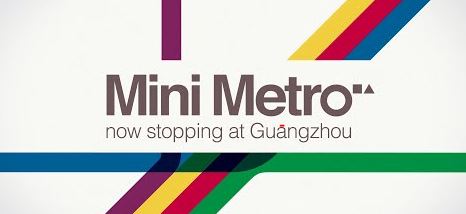
Have you ever been on a city’s metro or subway system and thought that you could do a better job? Of course, city metro systems are often governed by the dictates of history, local politics, and budgetary concerns, but if you’re in search of efficiency, none of that matters, does it?
That’s where Mini Metro comes in. Mini Metro lets you design a new metro system on some of the world’s most famous cities, ranging from London and Paris to Tokyo and Cairo. While you won’t have to plan around landmarks like the Eiffel Tower or the Pyramids (but, then again, did the original planners?), you will have to deal with wait times, tunnels under rivers, and the fact that some lines will just be busier than others
| Mini Metro | |
| Price: Free Category: Simulation |
|
| Version: Varies by device Developer: Dinosaur Polo Club |
Uninstall the app: 1. Go to Settings menu 2. Choose Apps or Application manager 3. Touch the app you want to remove 4. Press Uninstall. |

True to its name, Mini Metro lets you design and control a metro system for some of the world’s biggest cities. While each city’s needs start small, often only 3 metro stops and one line, a skilled player will soon be contending with dozens of stations and an ever-expanding number of lines.
Mini Metro is available for download as a mobile app from both the Google Play and Apple App Store, and is straightforward to install.
Mechanics
As apps go, Mini Metro is one of the easiest around. Routes are planned by dragging lines from one station to another, with bridges added automatically (and the count deducted from your allowance). Locomotives and, later, train cars are added by tapping the line, and can be removed by dragging them off.
As each level progresses, you’ll get access to more lines, more trains, and more cars for those trains. However, you’re going to need them. Every passenger has a specific destination, as indicated by their shape, that matches up to the shape of the train station. Common ones are squares, triangles, and circles. A pentagon or a star, on the other hand, may only occur a couple of times on each given level. That means that you can’t just create little ‘regional’ metros, but instead must make for an interconnected system.
Your commuters aren’t stupid, however, They will take the most logical way to their location, even if it means changing trains. However, having them change trains too many times will only add congestion to your line.
However, just like real metros, you will have to contend with grouchy commuters who are worried about missing work or getting home too later. A timer will appear over the head of any rider who feels that the process is taking too long. Luckily, the travelers have an almost British love for queuing, so at least it is first come, first serve.
One of our favorite touches is that some cities have unique enhancements that mirror reality. Levels based in Japan, for example, have high-speed rail connections that can quickly move across the map. These are very useful for connecting multiple hubs.
Strategies
When playing Mini Metro, you may find yourself taking a critical look at how metro systems are operated around the world, and that is very much what the developers want you to do. Of course, you’ll have a few tools that they don’t have, and vice versa. You can pick up and move lines at will, while the idea of rebuilding the Blue line in DC or the Picadilly line in London is a multi-billion dollar proposition. That is definitely worth taking advantage of.
Meanwhile, while real life metro planners will have the ability to increase train speeds, you won’t. Of course, you could always comfort yourself by thinking that your trains never have accidents, since they are going at a safe speed.
When it comes to strategies, the best ideas are often exhibited by real-life metros. That means using lines that act as express routes, circle routes or that even share tracks with another line (the practicalities of which are ignored in game play). When those rare stations come along, turn them into hubs. Additionally, try not to have more than 3 of the most common station types, namely circles or triangles, in a row. This may lead to a convoluted metro map, but that is often the reality.
Additionally, use transfers to your advantage; your commuters are smart, and will take a secondary route if one is available. Meanwhile, there is nothing wrong with running multiple locomotives on a line, but you may find it more efficient to use two trains with multiple cars than just locomotives. Finally, don’t be afraid to pause and rebuild.
In short, Mini Metro is one of the most intriguing apps out there, especially if you’re a fan of city builders. For older fans who remember Railroad Tycoon or Simcity (back before EA got a hold of it, that is), Mini Metro is simple, lightweight, and refreshingly fun. While you won’t lose hours in it like you would a Civilization or an Age of Empires, it is still going to grab and hold your attention, at least while you’re waiting for the next train.



